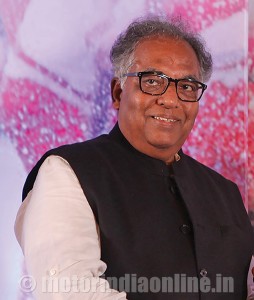By S. Ramachandran, Director, and K. Balasubramaniyam, Vice President – Operations, Speed-A-Way Private Ltd
The Indian automotive aftermarket, currently valued at Rs. 37,000 crores, is expected to grow at a CAGR of 12 per cent to reach a market size of Rs. 1,00,000 crores well before the end of this decade.

The aftermarket business is a key segment for both original equipment manufacturers (OEMs) and component manufacturers (CMs) as it contributes to a significant proportion of their profits.
The key drivers of the potential growth of the automotive aftermarket are the explosive growth in vehicle population in the recent past, with a sale of 10 million passenger cars, multi-utility commercial vehicles and farm equipment in India in the last 10 years, and the non-cyclical nature of the aftermarket vis-a-vis the cyclical nature of new vehicle sales.
Ironically, a drop in new vehicle sales in certain years will only lead to vehicle owners spending more money on repairs to upkeep their existing vehicles.
Both the OEMs and CMs see a good opportunity in tapping the aftermarket. However, aftermarket players face several deterrents to realize their potential in the market. The key challenges faced are proliferation of the unorganized sector with lower prices resulting from the failure to comply with the statutory requirements, and the widespread availability of counterfeit components accounting for more than 30 per cent of the parts sales.

Players in the aftermarket have no option but to work on strategies to overcome these challenges as the vehicle parc will only witness increased growth over the coming years.
Some of the strategic initiatives to tap the growth opportunities are:
Go genuine, go safe: Aftermarket players must build awareness among customers about the high-cost implications of using low-cost spurious parts highlighting the impact on the total cost of ownership. The risk on safety, particularly in the case of brakes and steering parts, should be emphasized. Component manufacturers have a special role to play in educating customers on identifying a genuine part.
Apart from the traditional ways of creating publicity through van campaigns and mechanic/retailer meets, the social media should be put to good use to spread messages on the use of genuine spares. Since most members of the eco system – retailers, mechanics and fleet owners – have access to smart phones, it will be pertinent to leverage digital technology to spread this awareness.
Expand reach: Aftermarket players should continuously expand their customer network to attain an optimal geographical spread. The network expansion strategy should also take into consideration the upcoming Goods and Service Tax (GST) regime.
Companies should also develop a robust B2B e-commerce platform, which will enable their customers to have access to a comprehensive parts catalogue and place orders through the Internet.
Drive high performance: Aftermarket players should lay special emphasis on motivation, training and retention of their workforce. Institution of best performing awards and attractive reward schemes will help in retaining high performing individuals.
E-learning modules have proved to be very successful in the upgradation of product knowledge and development of soft skills.
Strengthen relationship: Aftermarket players should aspire to build long-term relationship with their channel partners through a transparent flow of information between the principals and the partners, maintaining the highest level of ethics and integrity.
Dedicated customer portals and mobile apps for channel partners will provide real-time visibility of business transactions. This will also help eliminate unnecessary paper work, reduce response time and improve process efficiencies.
Given the positive outlook on the long-term growth of the Indian automotive industry, the aftermarket segment is only expected to grow even further and will always remain an attractive and a profitable business proposition.